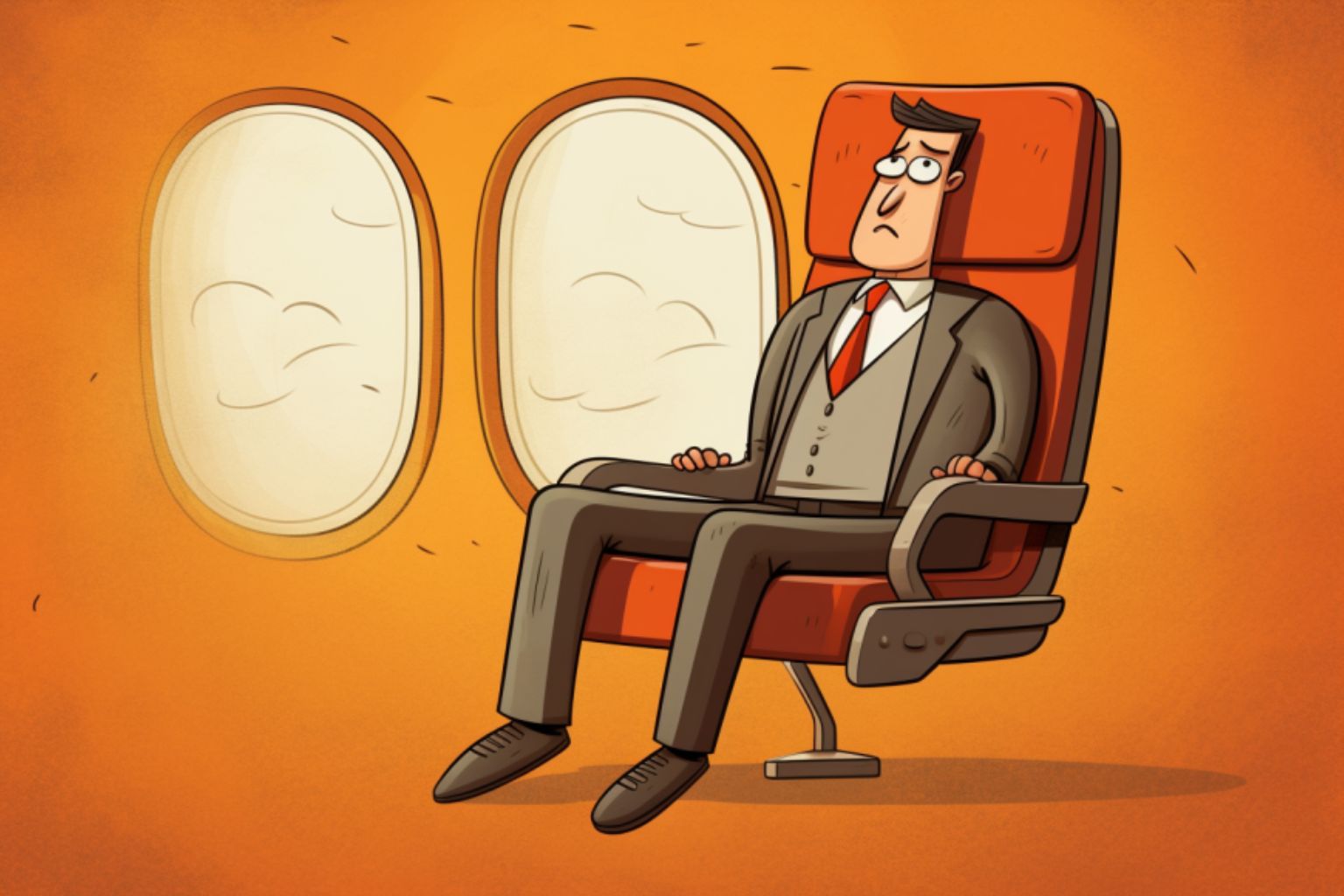Katie Anderson’s son, Brooks, is 6′ 7″. The average economy class seat “pitch” on a Spirit Airlines Airbus A321 — the distance between seats on an aircraft — is between 30 and 31 inches. It is hardly enough room for a big guy.
When he flew between Chicago and Fort Myers, Fla., before Christmas, he squeezed his XL frame into one of Spirit’s tiny seats for takeoff. He was then asked to stand for more than two hours, according to his mother.
Says Anderson,
They would not give him a bulkhead or exit row seat. He does not fit in a regular seat. His height prohibits this.
He is not overweight. It wouldn’t help to have two seats like an overweight person. This is more like a handicap. He can’t lose height.
Neglected customer service
Asking a passenger to stand for the whole flight is highly unusual, but not illegal.
Anderson wanted to know what she could do to make her son’s return flight more bearable. She sent a brief, polite email to Spirit, and I also contacted the airline on her son’s behalf.
The response from the airline? Nothing.
Both of us tried several times, and were either met with canned responses from Spirit’s outsourced call center or complete radio silence.
Anderson is exasperated.
It really is crazy. What if they had turbulence or other issues? I’m surprised it was allowed, let alone required of him. He’s dreading the possibility of a return in the same conditions.
Conflicting accounts
The airline’s account contradicts Anderson’s claim that her son was “required” to stand. Spirit says he asked for permission to stand during the flight.
While Federal Aviation Administration rules mandate passengers to be seated with their seatbelts fastened during takeoff and landing, the agency strongly advises passengers to remain seated for their entire flight due to the possibility of turbulence.
In nonfatal airline accidents, in-flight turbulence is the leading cause of injuries to airline passengers and flight attendants. Every year, approximately 58 people in the United States are injured by turbulence while not wearing their seat belts. (Related: Rescued from Spirit’s fare club, but still unhappy.)
From 1980 through 2008, U.S. air carriers had 234 turbulence accidents, resulting in 298 serious injuries and three fatalities.
No question, Spirit was putting Anderson’s son in harm’s way by requiring him to stand most of the flight.
Debating airline policies on airline seats
And I agree with Anderson that standing on flights is a very bad idea. I have my own reasons.
So what should Spirit have done? A flight attendant should have offered to switch Anderson’s son to a bulkhead or emergency exit row, which typically offers more legroom. Failing that, the crew should have attempted to upgrade him into a premium seat with 36 inches of seat pitch. (By the way, that used to be the standard seat pitch before airline deregulation.)
That might have cost Spirit a little revenue, but it would have generated a lot of goodwill.
Is height a disability? Is weight a disability? Should airlines be required to provide accommodations for passengers who are extra-tall or extra-heavy in the same way they currently have to accommodate people with other disabilities?
Spirit apparently thinks it shouldn’t.
Legroom, accommodations, and passenger welfare
Update (12/30): There’s been a lively debate about this case, and I’m grateful to all of you who have participated.
The Federal Aviation Administration is investigating this incident. Anderson is also filing a grievance with the Transportation Department.
Anderson reports that the flight back to Chicago was far better for her son.
When we got to the counter we told the story of the flight down. A gentleman next to us checking in offered Brooks his first class seat.
The woman behind the counter looked a bit stunned at that offer and said that wouldn’t be necessary, they would be able to find him a seat in the exit row. (Here’s how to survive a long flight in economy class and avoid jet lag.)
(Actually we were all stunned by his offer, but it must have been obvious to him that Brooks’ height is an issue.) It was interesting that they couldn’t do that on the way down.
Nice of Spirit to take care of Brooks on his return flight. (The Spirit flight attendant asked the mother to hold her two-year-old on her lap, despite having purchased a ticket for the toddler.)
One more thing: I’ve been covering the airline industry since 1989, and in that time, the industry-standard seat pitch has been roughly 32 inches. So Spirit’s 30 to 31 inches are between an inch and two inches short, by my calculations. (Related: Passenger forced to stand for a seven-hour airline flight.)
There is no definitive authority on this issue, so to those who think I’m wrong, we’ll just have to agree to disagree. But I’ve decided to move the debate down here, since it’s distracting some readers from the point of this story, which is that a passenger couldn’t find a place to comfortably sit on a plane. By the way, we get lots of Spirit cases here, including this one about a nonworking voucher, in case you’re interested.)
Thank you, again, for the helpful comments.




